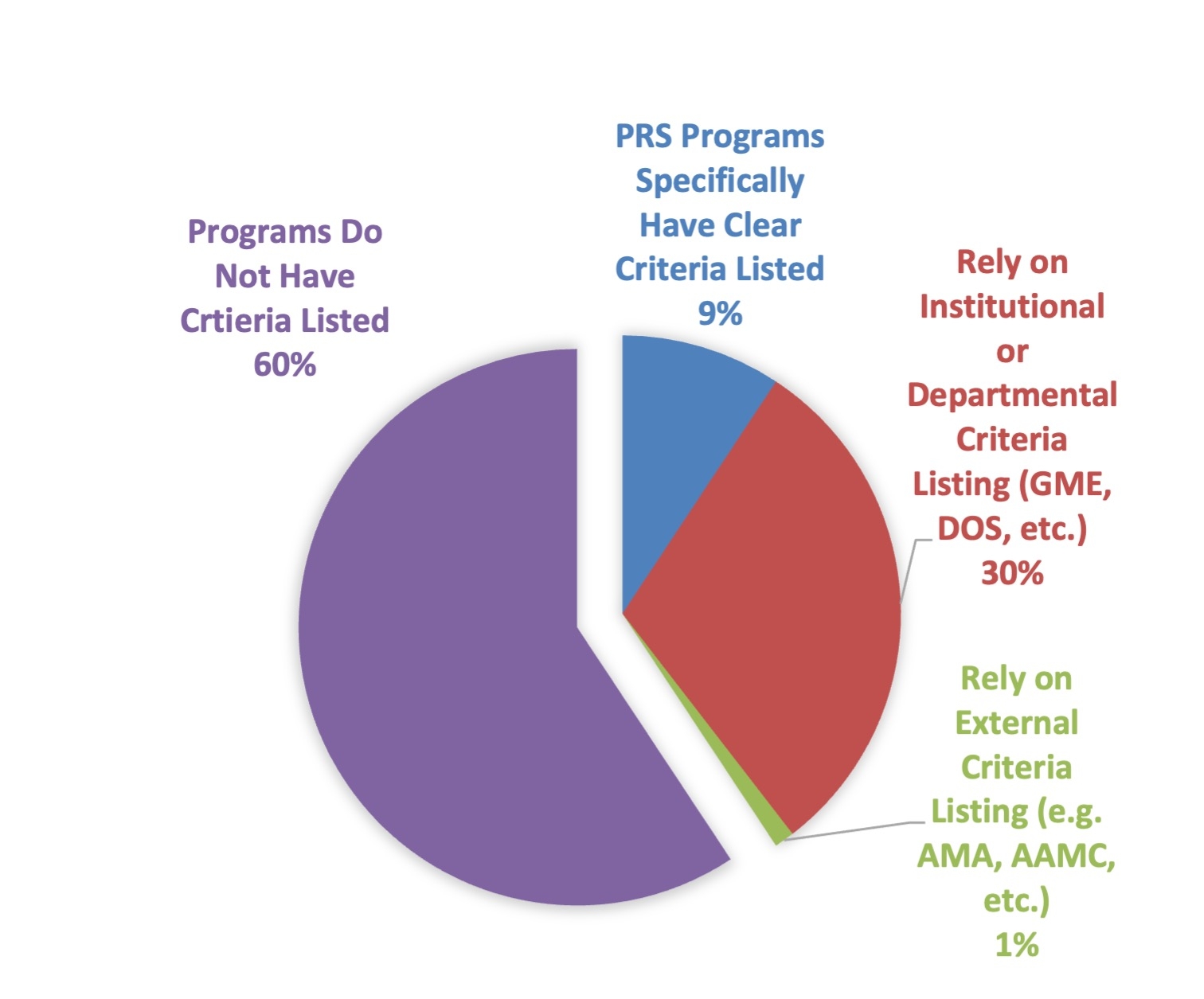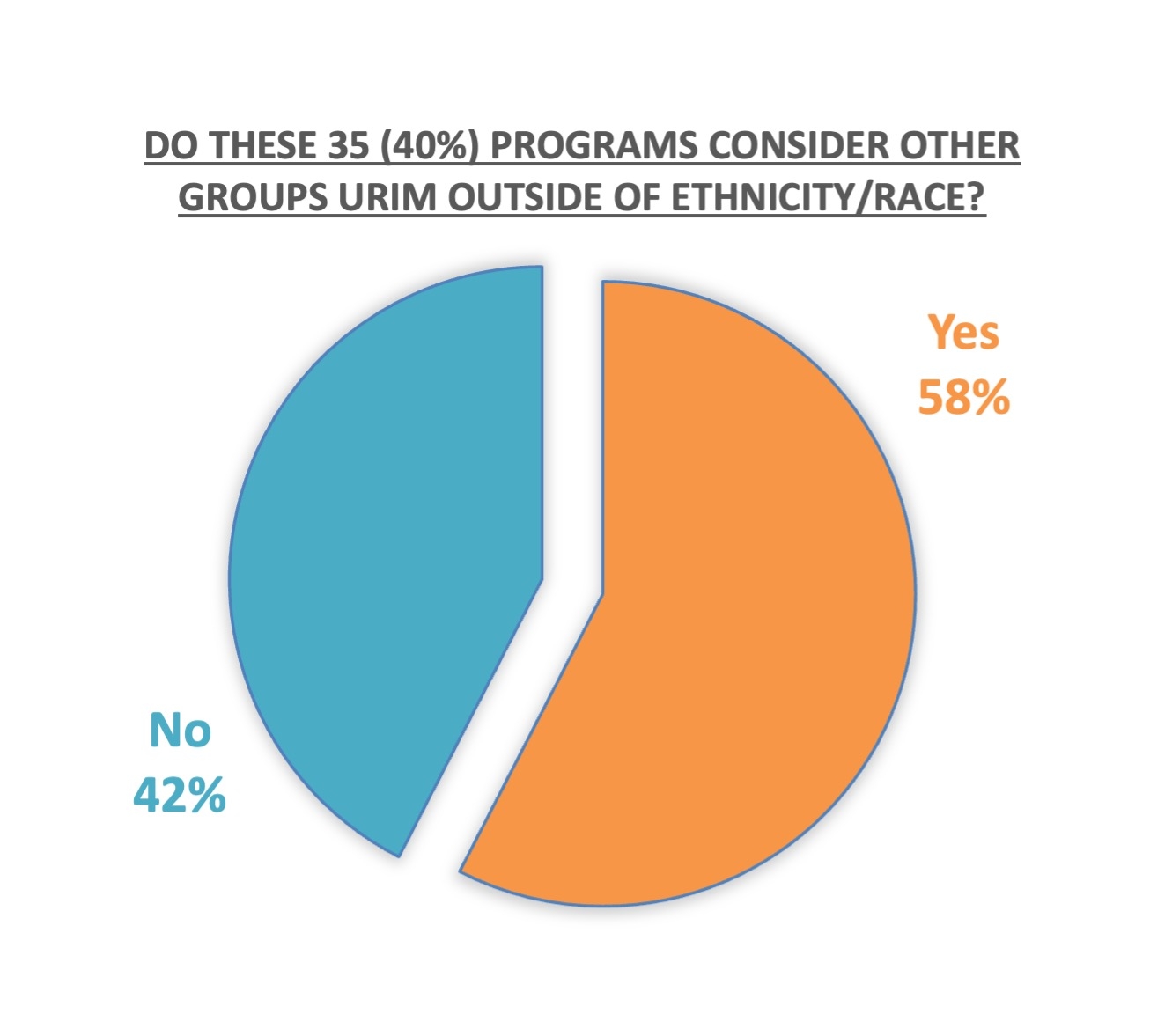Are We Speaking The Same ‘Language’ Regarding Groups URiM And Increasing Diversity Within The Field of Plastic Surgery?
Nerone Kiyoshi Omari Douglas*, Carolyn De La Cruz, Francesco Egro
Department of Plastic Surgery, University of Pittsburgh, Pittsburgh, PA
Plastic Surgery is one of the fields that lags behind the rest when it comes to surgeons from backgrounds underrepresented in medicine (URiM). The goals of our study quantify how many integrated plastic surgery residency programs have outlined criteria defining diversity goals and/or groups of people they consider to be URiM.
Each program site was reviewed for diversity missions/statements and explicit mentions of racial and ethnic groups considered URiM. Information was also collected regarding other groups, outside of race and ethnicity, considered URiM which was a crucial part of a program’s diversity goals.
From a total of 86 programs reviewed, 8 integrated PRS programs (9%) had clear URiM criteria listed on their websites, 26 programs (30%) relied on institutional/department-wide criteria, 1 program (1%) listed that they were adhering to AAMC definition of URiM, and 51 programs (60%) had no form of definition for what is considered URiM. When looking at the programs with criteria for URiM (n=35; 40%), all programs (100%) considered African American/black, Native American/Alaskan Native, Hispanic/Latinx, and Pacific Islander/Native Hawaiian as groups URiM. 19 programs (58%) had listed other groups, outside of race/ethnicity, considered to be URiM for their program and 14 (42%) programs did not. Of the other groups recognized to be URiM at these programs, 14 programs (74%) considered those that represented the LGBTQIA+ group were URiM, 10 programs (71%) considered socioeconomic disadvantages as a criterion for URiM status, 2 programs (11%) recognized those from rural backgrounds to be URiM, and 1 program (5%) considered medical students that came from an institution without a home plastic surgery program, to be URiM.
Even though diversity within residency programs is on the rise, integrated plastic surgery is still slow to change. This study serves as a call to action to encourage residency programs to evaluate their mission towards diversity, equity, and inclusion, and to spark discussion towards creating a purposeful selection process for applicants URiM.
Other Groups Considered URiM
| Groups | # of Programs | Percentage (n=19) |
| LGBTQIA+ | 14 | 74% |
| Socioeconomic Disadvantages | 10 | 71% |
| First Generation | 2 | 11% |
| Rural Background | 2 | 11% |
| Institution w/o a Home PRS Program | 1 | 5% |


Back to 2023 Posters


